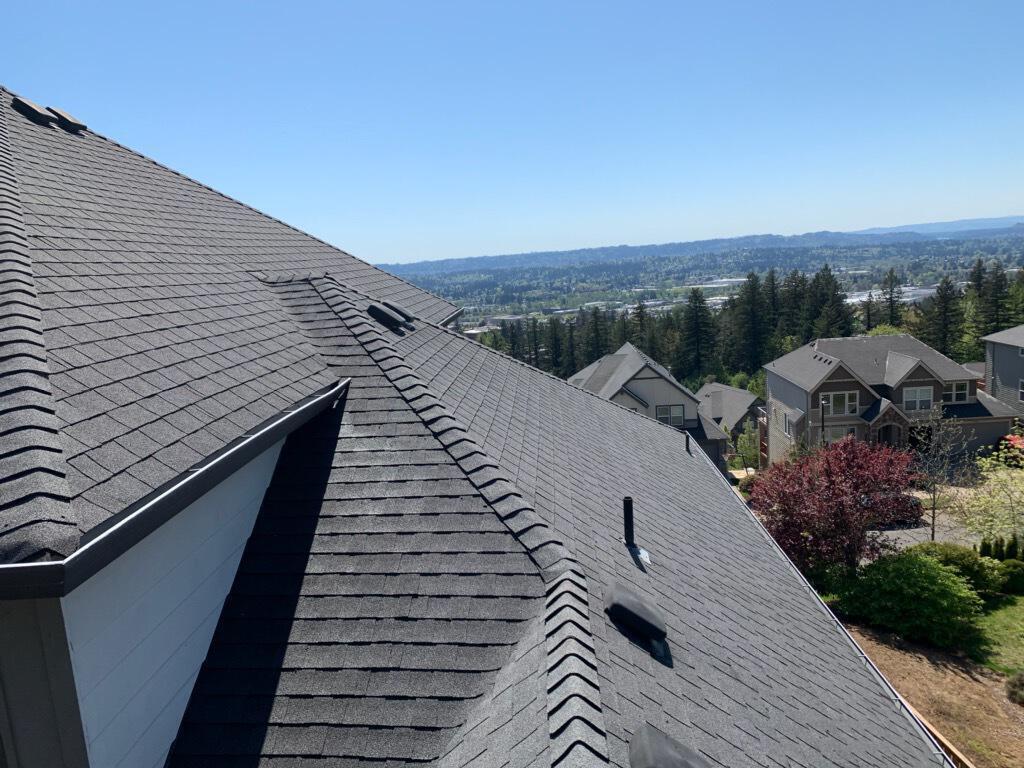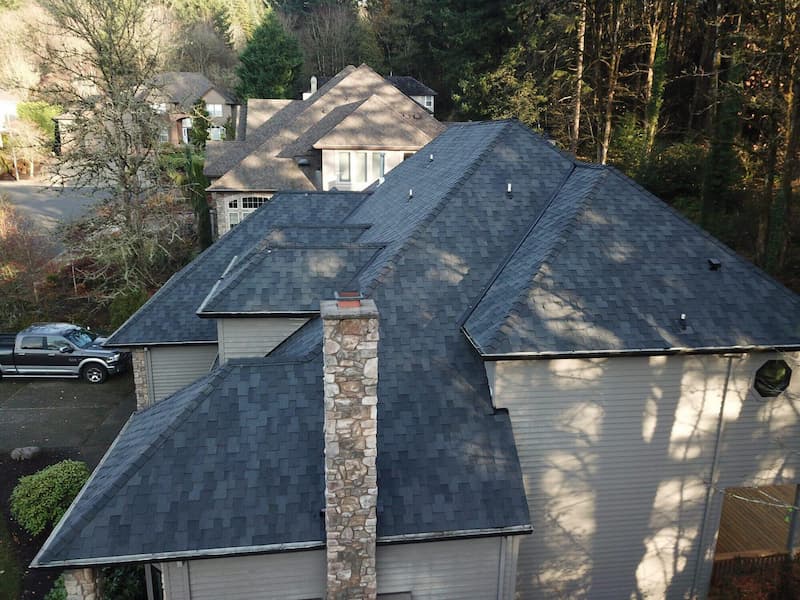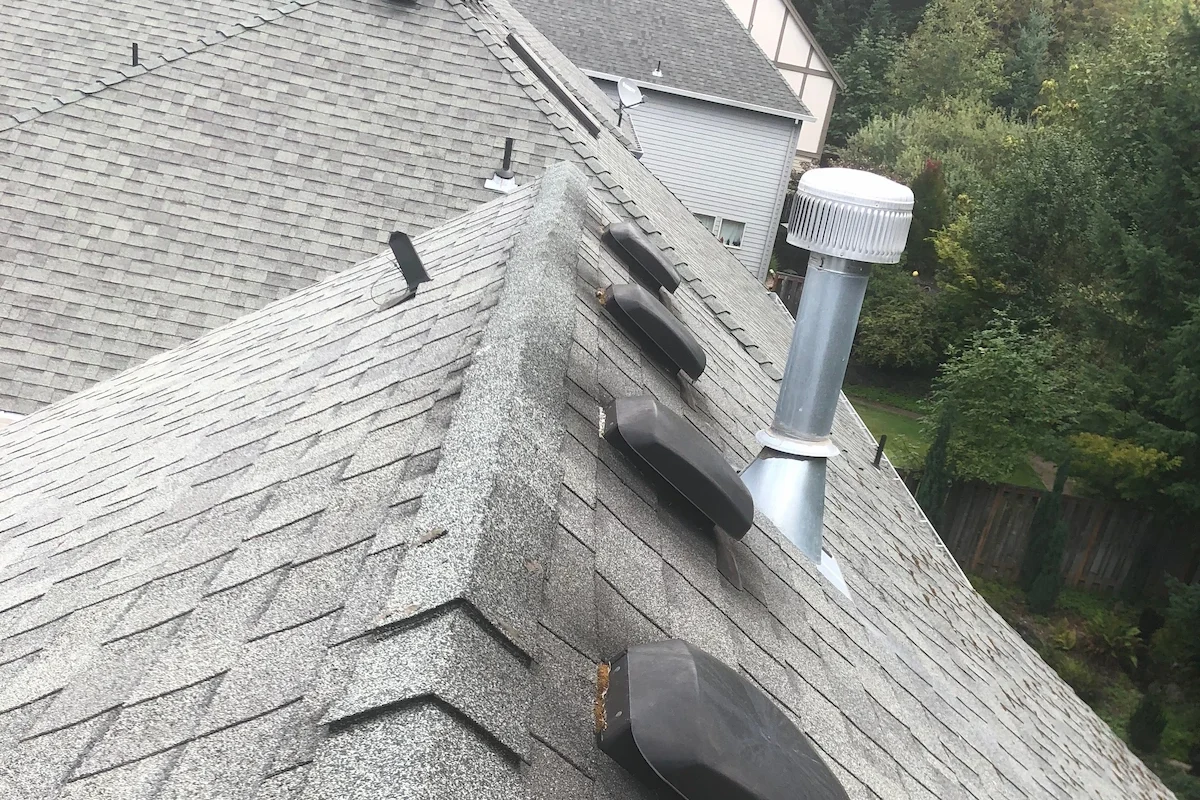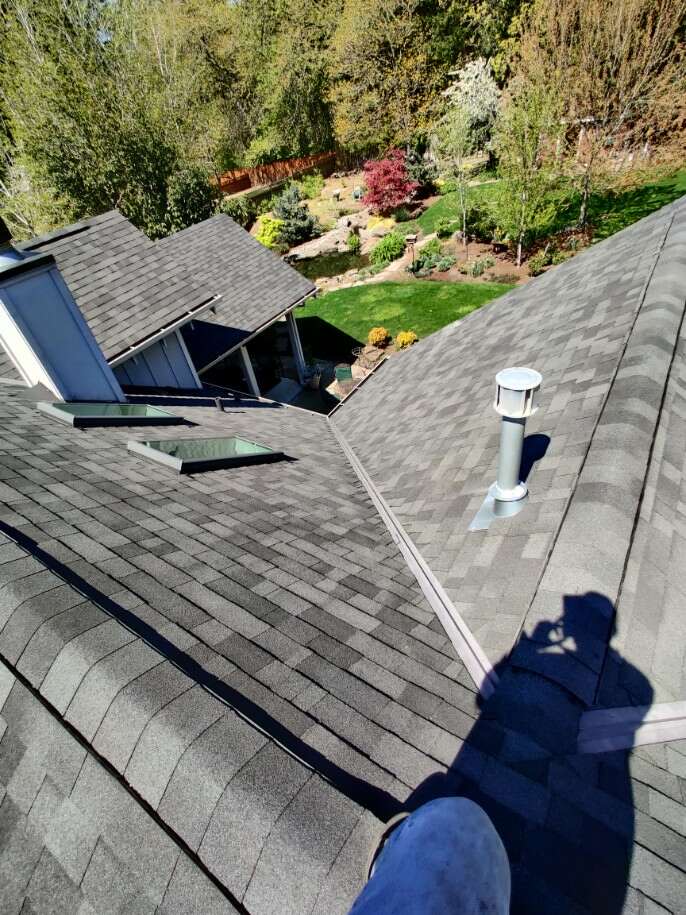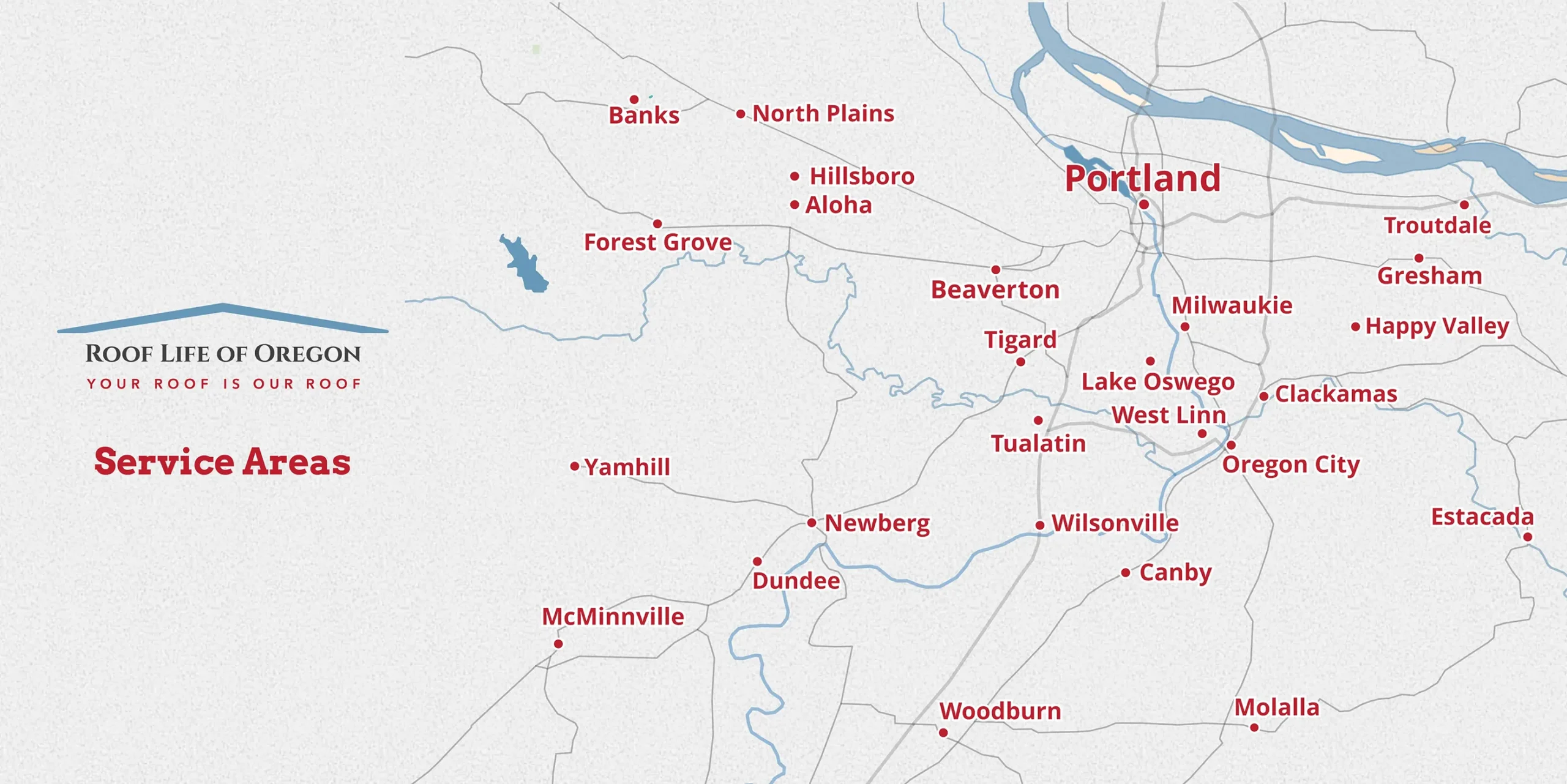Proper roof ventilation is one of the best ways to ensure your roof lasts as long as possible. Proper ventilation helps:
- Prevent mold, rot, and ice buildup. Roofs that are properly vented have a constant stream of airflow, which allows moisture to escape the roof. This helps prevent mold and mildew from growing, the roof structure from rotting, and ice from building up on eaves in winter.
- Reduce inconsistent temperatures. Proper roof ventilation helps ensure temperatures in your home are more consistent. Expelling the hot air from your roof prevents it from sitting in the attic, which can significantly increase the temperature of your home’s upper levels.
- Improve energy efficiency. By ensuring temperatures in your home stay consistent, your HVAC system won’t work overtime. This helps keep your electricity bills down and allows your HVAC system to run as efficiently as possible.
- Increase roof longevity. Heat and moisture can quickly be the downfall of any roof. Moisture buildup can deteriorate the roof structure and insulation, requiring a new roof sooner than you’ll need it. Proper ventilation ensures your roof stays as dry as possible, helping it last that much longer.
